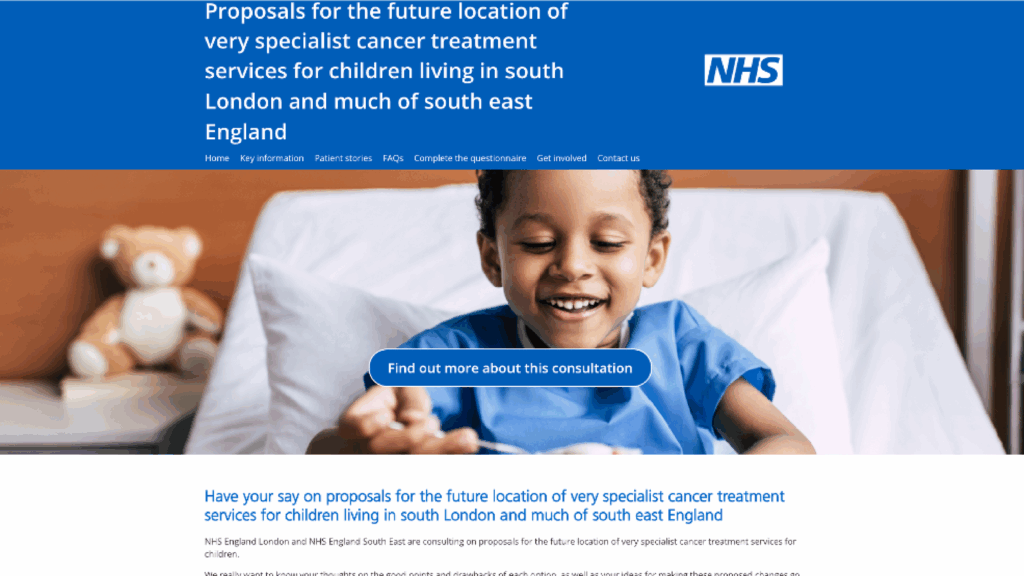Supporting decision-making on children’s cancer care
Case study
We provided expert communications and engagement for the reconfiguration of very specialist cancer treatment services for children who live in south London and much of south east England, on behalf of NHS England (London and South East).
It was very important the programme heard from children with experience of cancer as well as their families, staff, councillors, and others.
To do this, we:
- spoke to children and young people about what would help them to take part
- created clear, simple materials, as they advised, including an animation, and an easy read summary of the consultation document and questionnaire
- arranged for letters to be sent to current patients and their families about the consultation, asking them to share their views
- spoke directly to children and young people and their families in waiting rooms, at cancer units in other hospitals across the catchment area went to meetings of parents of children with disabilities, and from communities with protected characteristics to ensure their specific needs were considered
- brought in a specialist organisation to speak to parents and children in more deprived communities
- brought in a play specialist organisation to work with children having cancer treatment.

The play specialist team:
- created a play hospital for younger children to help them understand the proposal, share their responses, and have fun while doing it. It could be taken to the bedsides of very sick children
- encouraged older children to tell the story in their own words, using cards on a bulletin board, comic strip images, or writing a ‘letter to the big boss’ using a template.
We also spoke to staff and other stakeholders. To do this, we:
- held staff engagement sessions in-person and online, particularly for those staff who worked directly with these services
- offered visits to the proposed sites so that service users and staff could view the two options and have the opportunity to speak to senior management and clinical leads for more information
- held briefings with key stakeholders including Institute of Cancer Research, MPs, Healthwatch, charities and interest groups.
Outcomes
- Our consultation website attracted over 50,000 views and the animation and videos in support of the consultation over 1,000 views each.
- Over 2,600 consultation responses were received from a representative sample of the population affected. The service is used by about 1,400 children a year across south London, Kent, Surrey and Sussex.

Impact
The decision in March 2024 took account of the consultation feedback including the different concerns raised. The Secretary of State for Health and Social Care decided not to call in NHS England’s (London and South East’s) decision. ‘‘Calling in’’ means the Secretary of State takes a close look at a planned change to NHS services and whether to proceed with the proposal, modify it, or take other action.
Wes Streeting looked carefully at all the information provided about the decision and considered it against the criteria for calling in a NHS reconfiguration decision for review, and decided not to do so. His view was that this was the ‘‘best decision’’ for young cancer patients.
Plans for the new centre are being shaped by what children, young people and parents said they would most value.
Feedback on behalf of the London Mayor mentioned “the seriousness and effectiveness” of engagement with the public and stakeholders and added: “…there has been a creative approach taken to consultation, using a variety of media and access options and multiple delivery partners, and strengthened by using an independent organisation to report on consultation activities. That report found that those engaged were broadly representative of the patient cohort.”
